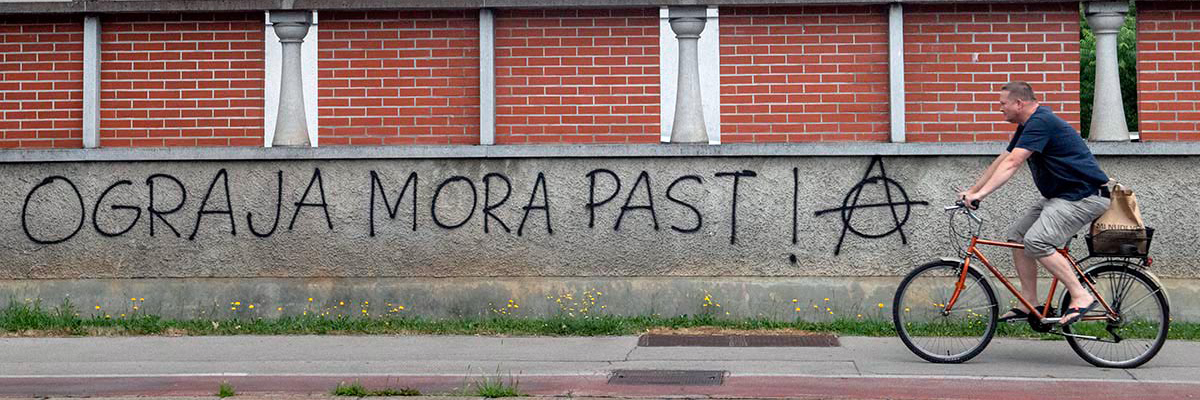We’ve had the privilege to travel to many cities and cultures over the last decade and a half, from Russian to Chinese to North African to Tahitian and Norwegian, to witness the affecting power of street art on cities, communities, and everyday people. Regardless of the street author’s intent, however earnest or carefully considered, we’re often surprised by the variety of interpretations that can arise from a singular work of art or intervention.
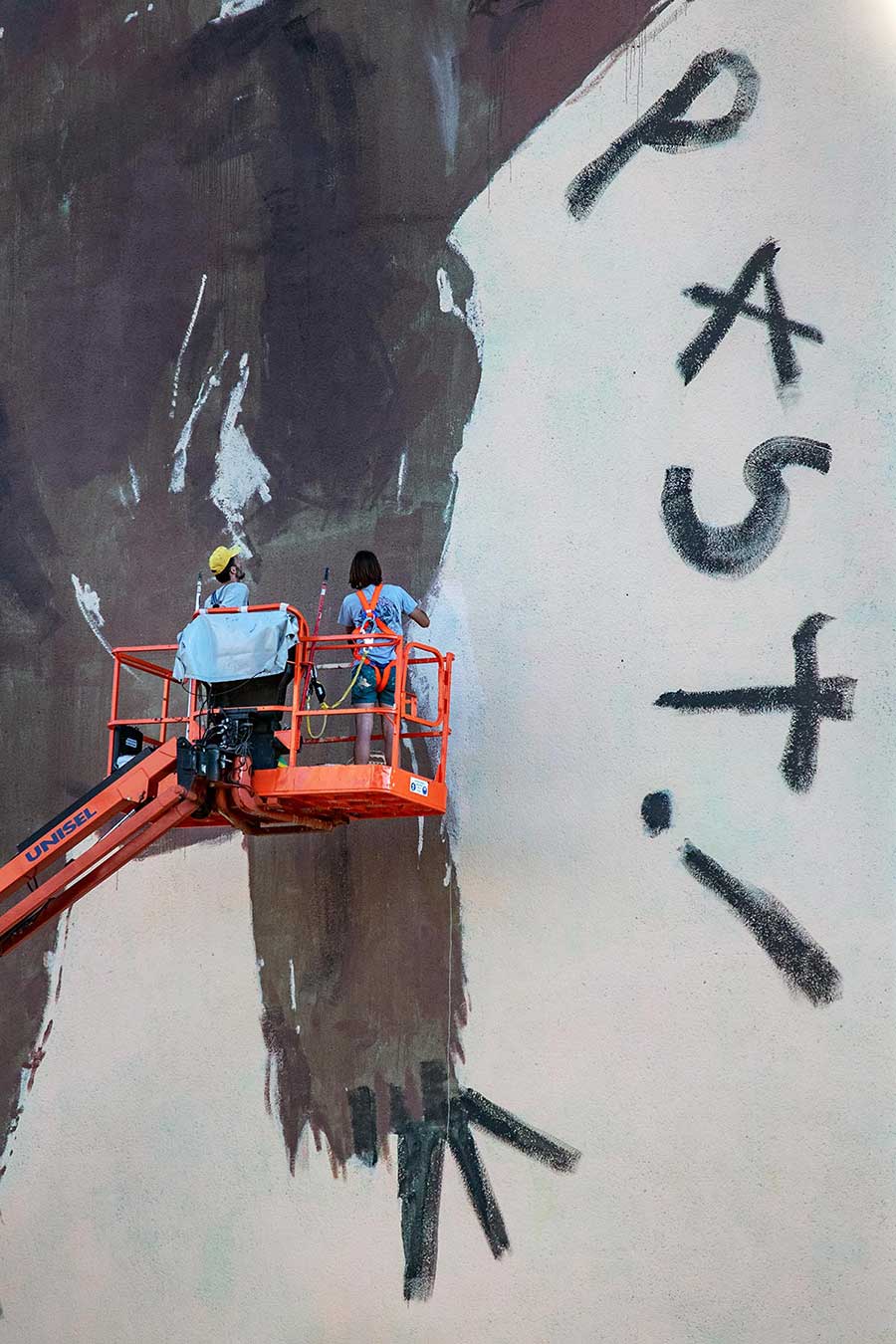
This new mural by the Spanish conceptual artist and social philosopher Escif for this year’s Ljubljana Street Art Festival (LJSAF), begun in Slovenia’s capital in 2019, is just far enough removed from the obvious to have triggered myriad interpretations. In the race for capturing imagination, adoration, and vilification, his seemingly simple, if unconventional, mural has scored a stunning trifecta.
Our reporter on the ground, the renowned photographer and ethnologist Martha Cooper, one of the few who have stayed active on the graffiti and street art scene continuously for the last five decades, tells us that she keeps thinking that we are witnessing a more pronounced movement toward work like this on the global stage. Describing how the unique curation by festival director Sandi Abram and the program directors Anja Zver and Miha Erjavec strikes a balance, Cooper says they chose what may appear as a quirky selection of artists to participate, “with an emphasis more on conceptual, political work than on aesthetics.”
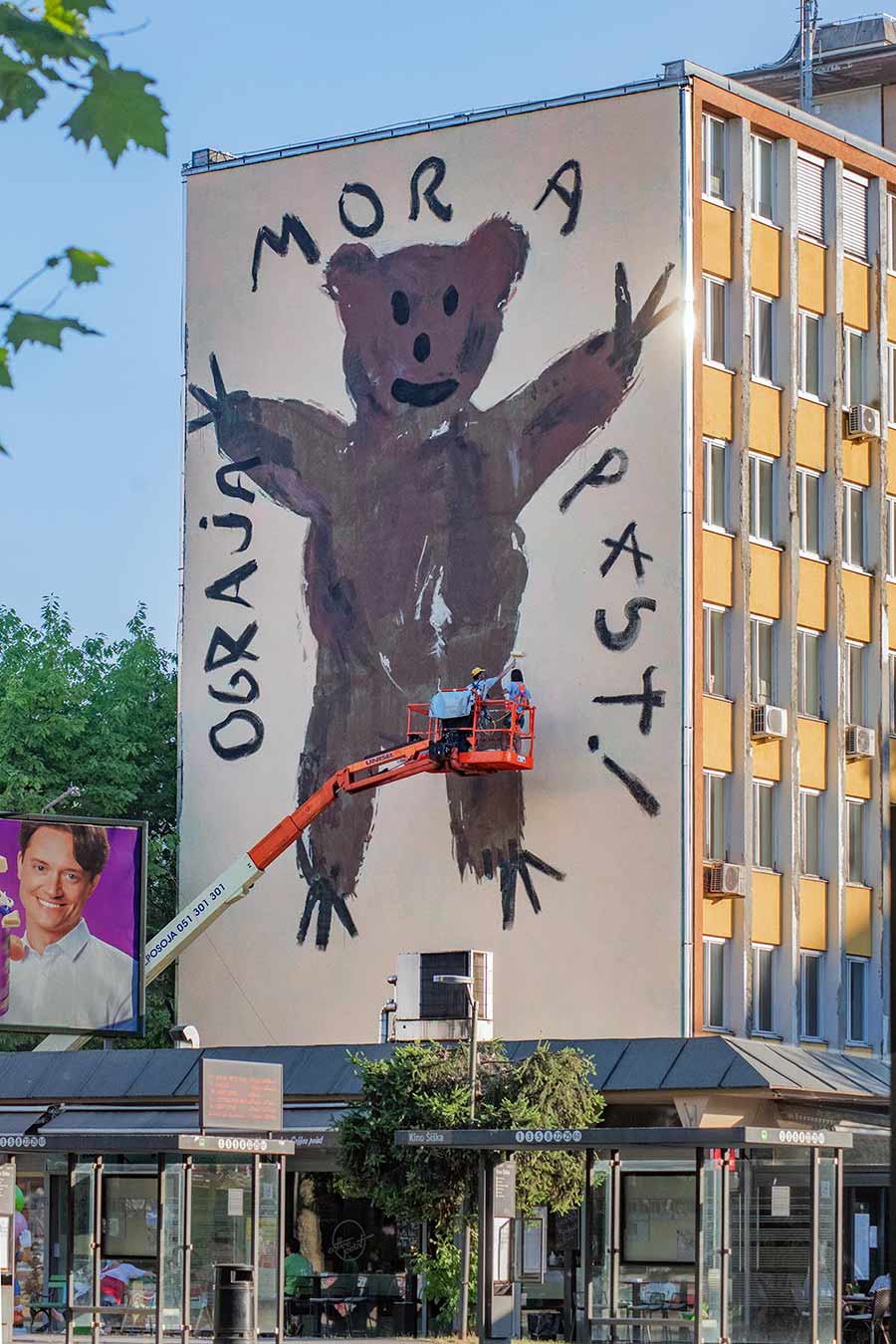
“I’m wondering if this is a general street art trend or maybe just more prevalent in Eastern Europe,” she says. A veteran of the last decade’s evolution of street art festivals that may now appear as baldly commercial or trite “revitalization” efforts by moribund city councils, Ms. Cooper is fascinated by unusual festivals such as Ljubljana’s. It may be due to Abram’s pursuit of a Ph.D. in anthropology, but Cooper observes that her Slovenian experience was of a program “thoughtfully curated with some interesting and innovative twists.” Since this year’s festival theme centered on the preservation and documentation of street art, Cooper was an honored guest and speaker as well.
With a borrowed bear from a local school child’s wall painting, Escif created a re-contextualization of the original furry friend. Enlarging it to fill the wall of a two-story building and attaching a stolen slogan from a nearby graffitied wall, Escif declared that “ograja mora past” (the fence must fall). The reactions haven’t stopped since. Depending on the opiner, the deceptively simple mural is addressing the contentious issue of immigration with Croatia, the historical memories Slovenians have of Hitler, or the increasingly impeded flow of wildlife along historical natural routes through Europe.
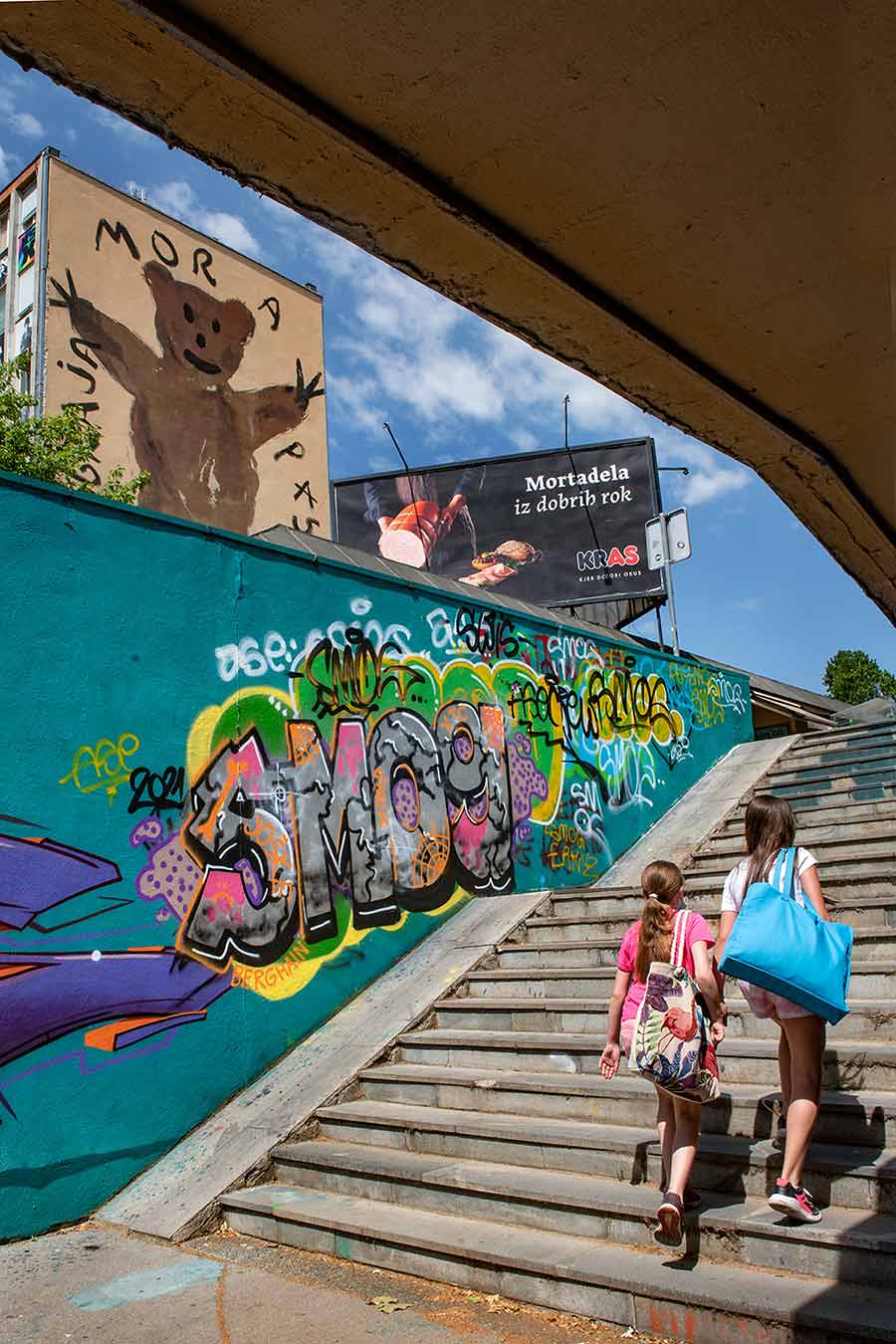
When Sandi took Martha to shoot the original bear painting, Mojca, a teacher in Vodmat Kindergarten, shared a sense of optimism she had by witnessing the resounding waves of impact that rippled outward from the original project. “The goal of the project was for the children to develop the heterogeneous language of art. If by painting this bear we have impacted society and the environment, then we have accomplished more than we could have ever imagined.”
The thoughtful and resolute Escif, as ever, developed and delivered a manifesto on his piece, “The Fences Must Fall”, where he states that “Painting a big wall in a big city is a firm and decisive position” for an artist.
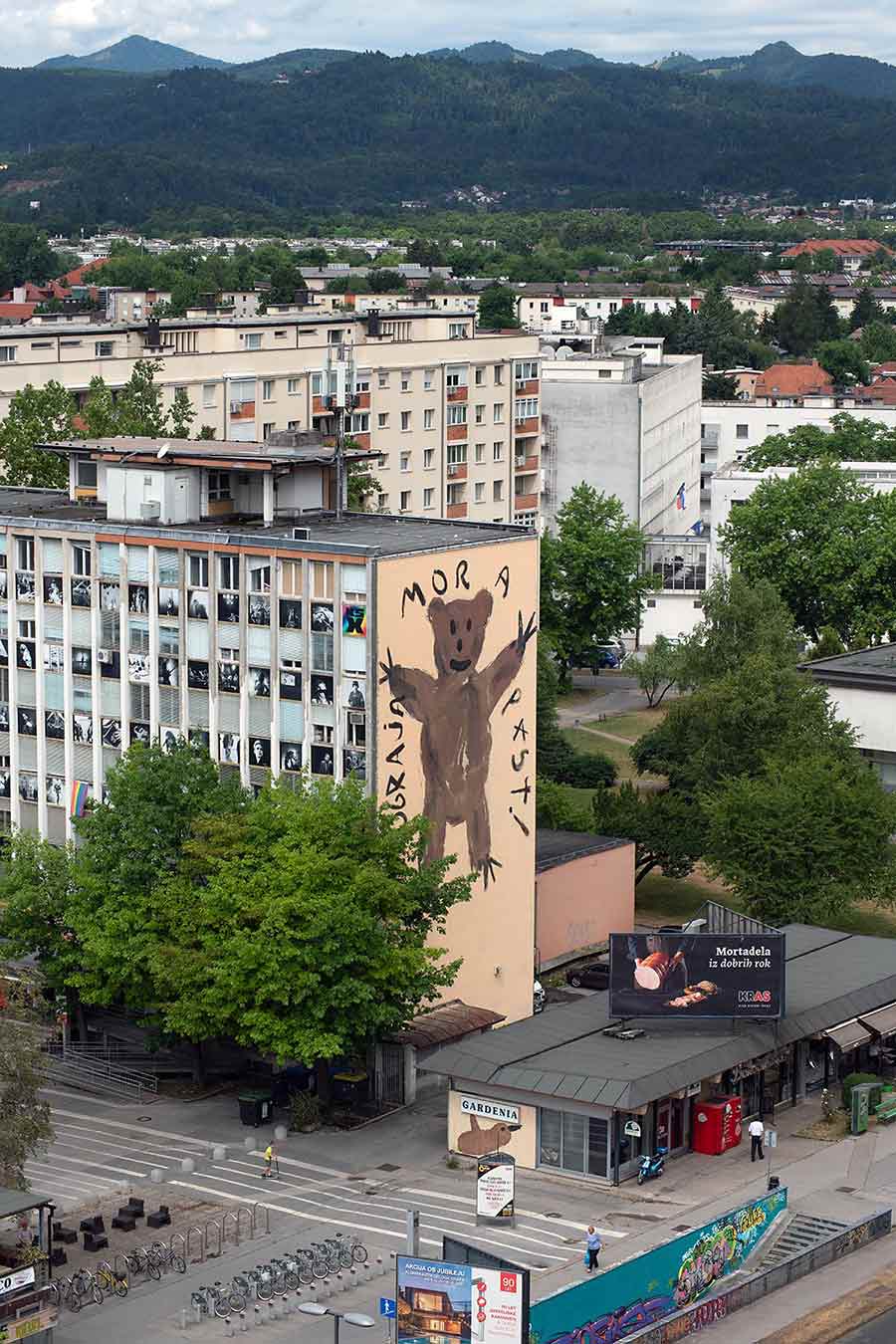
“I set out to find the truth that children paint on the walls of kindergartens. I cruised around the city streets, looking for the truth that crazy people spray paint on the walls. As I matched the truths of crazy people and children, of the walls of the former with the walls of the latter, the idea for the mural was born. An angry bear roaring ‘the fences must fall’.”
He continues, “As a foreigner, ignorant of the local reality, I couldn’t quite grasp what this mural was all about. Fortunately, it seems that the locals came to wise insights. Some seemed annoyed by the content. Others seemed happy and read it in a variety of ways. They spoke of the bears in Slovenia that the government wants to control. Of the cruelty of the border fence with Croatia, where refugees are harmed trying to cross it. Of the wild animals that can’t cross that fence either, locked in with no way to migrate. Of the fences that the government puts up to protect the National Assembly from protests. Of the problem of the privatisation of natural resources. And of many other fences that should be coming down everywhere.”
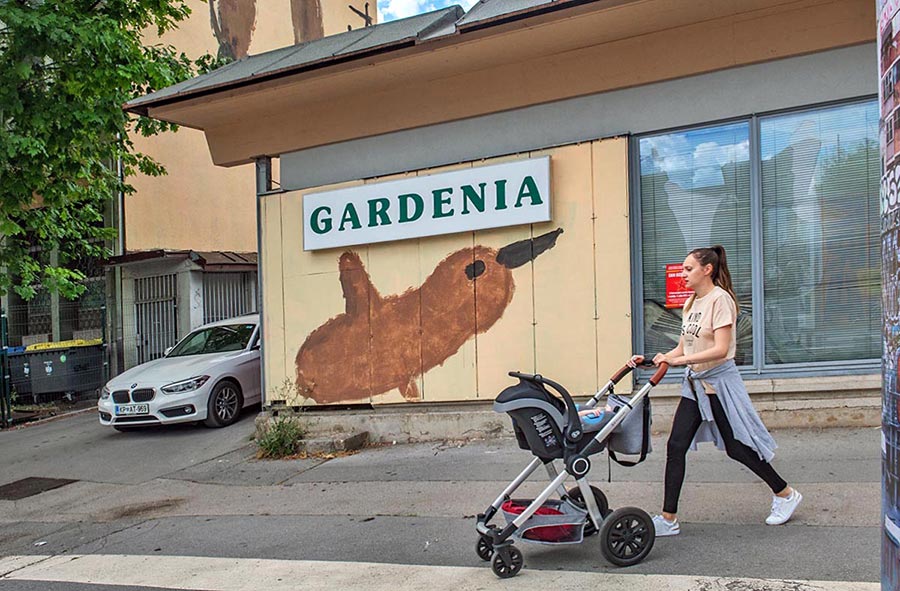
The simplicity of the design and placement are undoubtedly what makes it most magnetic; If you don’t understand the slogan, you want to. If you do understand it, you may crave the opportunity to respond.
“I found Escif’s wall much more interesting after I understood the story behind it,” says Cooper.
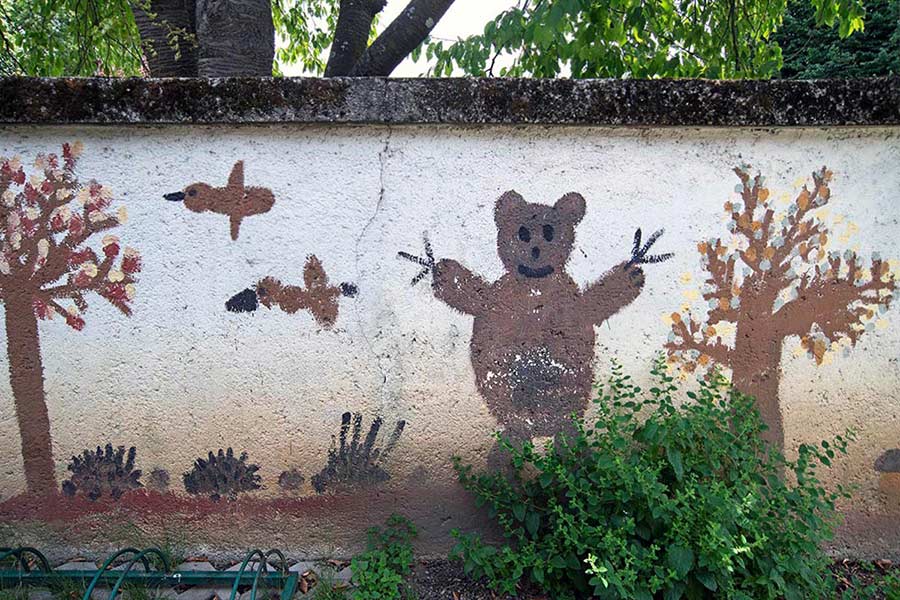
We spoke to directors Abram and Zver about the goals of this year’s festival and why they chose Escif to paint one of the larger, higher-profile walls of the Ljubljana 2021. We discussed how it became a somewhat emblematic piece that was at once surprisingly provocative and also caused dialogue in the streets. “To paraphrase what Escif said about his mural in Ljubljana: painting a mural is a political act, a responsibility, and a commitment,” they say.
“This is also true for the entire production of LJSAF – it is a commitment that requires the recognition that the festival is not a stable and fixed entity, but a heterogeneous and fluid mosaic of events, people, and creativity, operating at a micro and macro level. This is similar to Michel Foucault’s definition of heterotopias – a multiplicity of fragmentary spaces in a single place that allows for spontaneity. LJSAF is also about the experience as the essence of festivals – being part of the festival crowd means mingling with other creative bodies and forging new vectors of collaboration.”
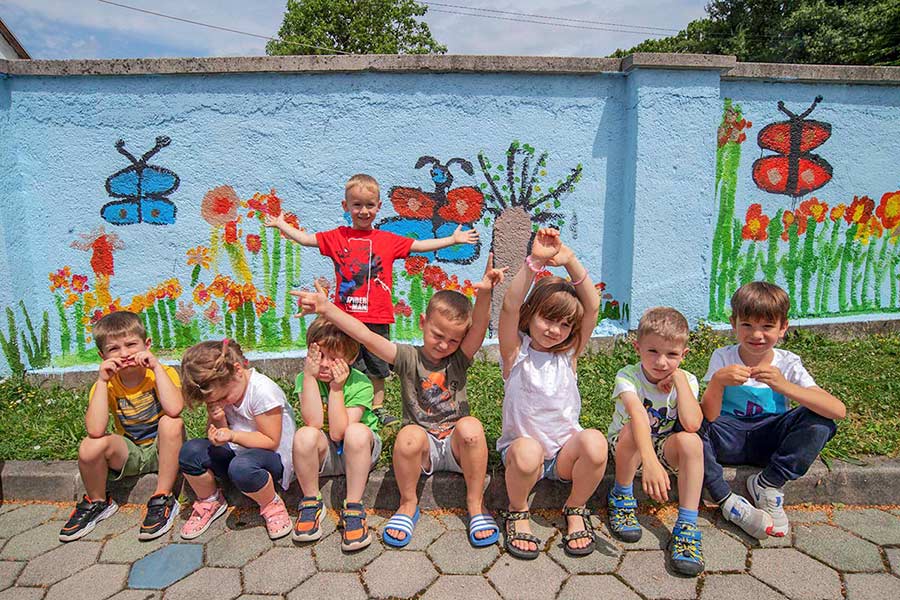
Escif appears pleased with the effect as well, perhaps occupying the ideal role of an artist working in public space today in a meaningful way.
“The etymological root of the word ‘politics’ is anything that directs, conditions, or modifies life in cities,” he says. “So painting a big wall in a big city is a big political act, as it directs, conditions, and modifies the urban landscape. Consequently, it also directs, conditions and modifies the lives of the citizens.”
In many cases, we’d have to agree that well-placed graffiti can have a similar effect.
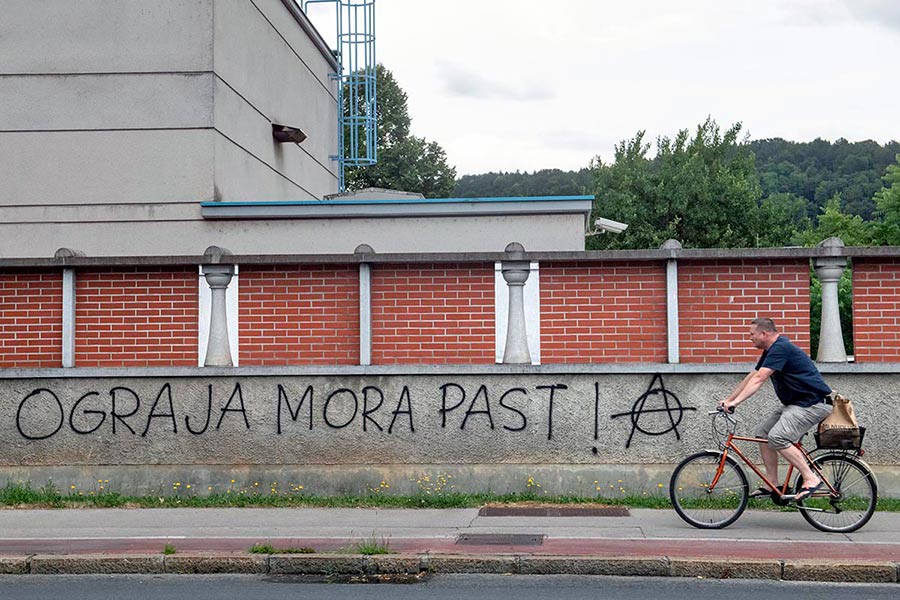
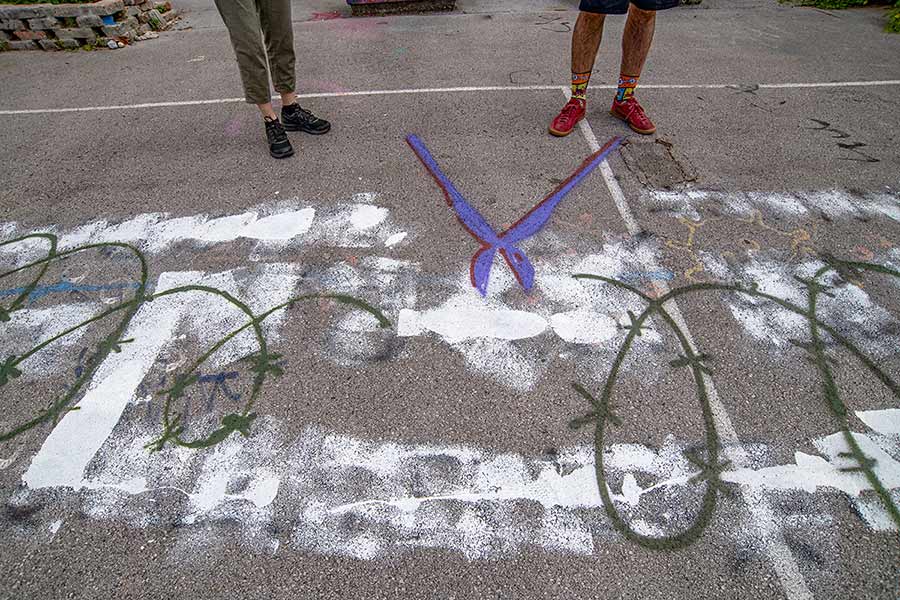
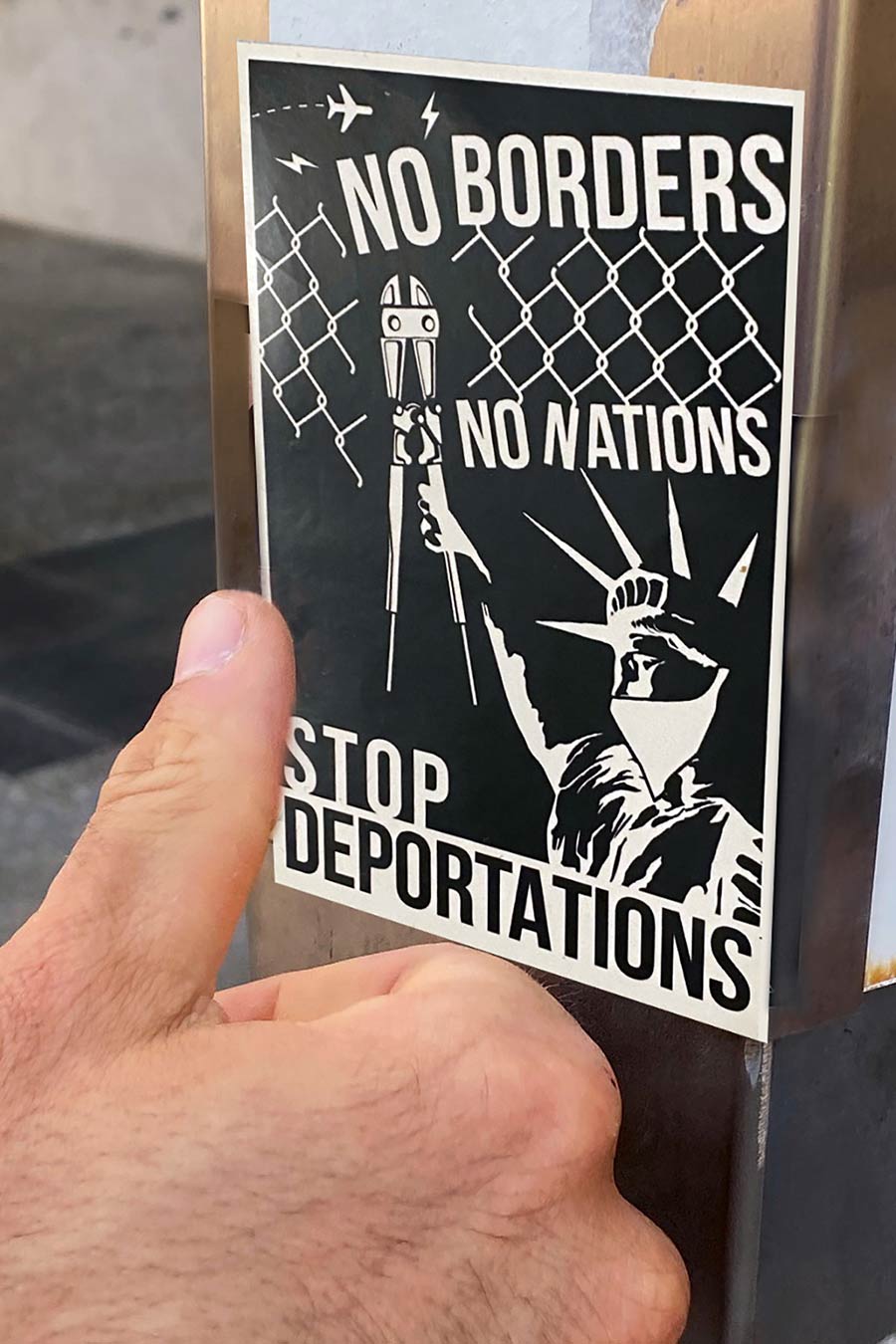
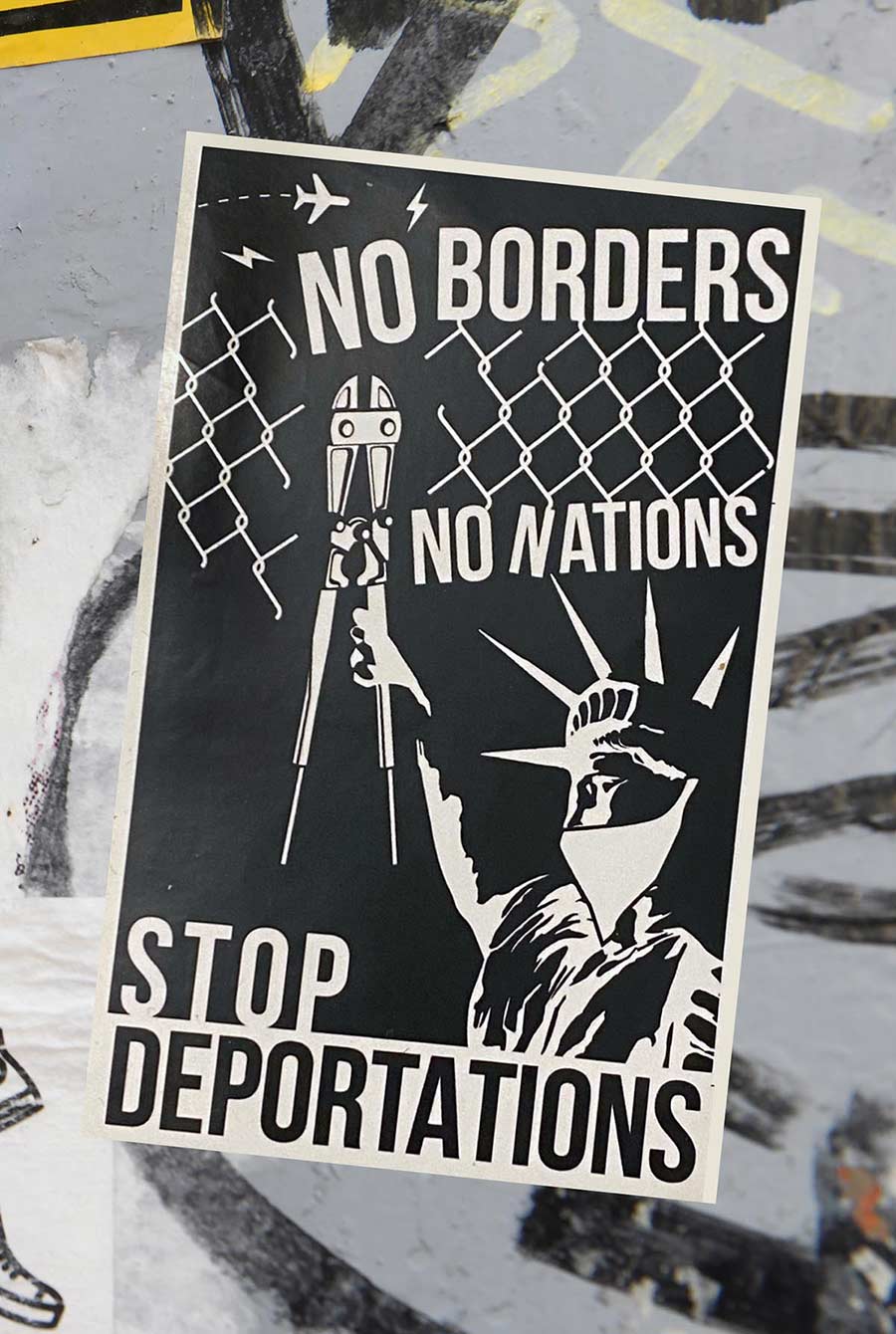
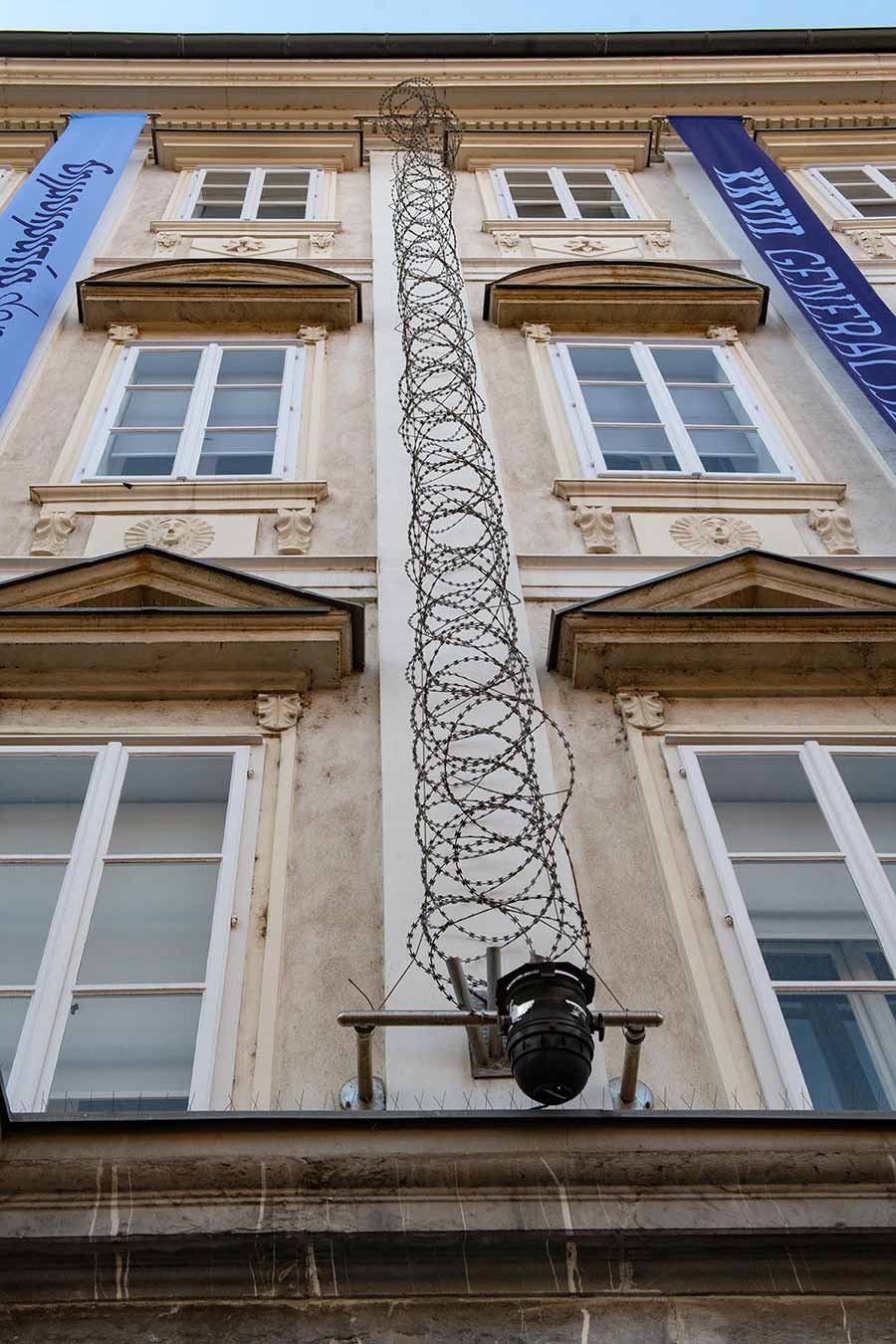
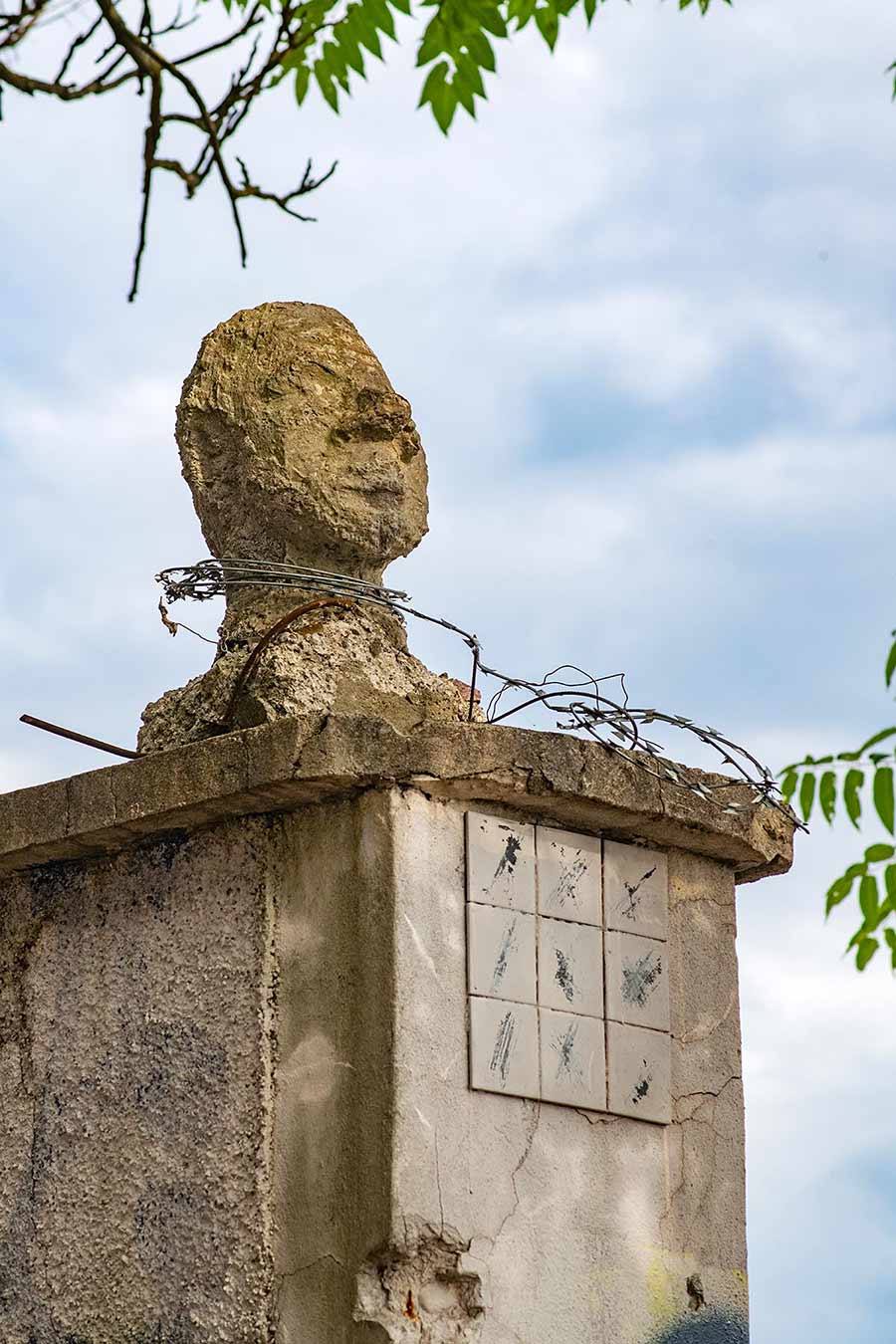
To read more about the history of Slovenia under Italian and German occupation during World Ward II and barbed wire fences click on the links below:
https://mgml.si/en/city-museum/exhibitions/30/ljubljana-encircled-by-barbed-wire-19421945/
http://www.muzej-nz.si/si/izobrazevanje/viri-za-ucence-in-ucitelje/1711
https://okupacijskemeje.si/exh01-ch09.html
To learn more about Ljubljana Street Art Festival click HERE
Other Articles You May Like from BSA:
Thanks to LoMan, the island of perdition is popping with new stuff almost daily. Could be coincidence or serendipity but this week NYC has new stuff from heavy hitters mixed happily with lots of new...
This week BSA is in Borås, a municipality in south-western Sweden for the 3rd edition of No Limit, a mural arts festival that brings Street Artists from around the world to create new works ...
Suffer from migraines? Troubled love life? Unhappy with how your children turned out? Bifido understands. Bifido. "Hell is round the corner". Bosco Urban Project. Gambettola, Italy. (photo © Bi...
A new mural from Rouge Hartley in Paris for the organization Art Azoi. The contemporary figurative painter is attracted to the street, although she didn’t begin with graffiti or street art. Originall...
The soil in this garden is a deep rich red hue, as is the lifeblood that pumps through this modern compound with echoes of Egyptian mastaba architecture. Jardin Rouge invites Street Artists, graffiti ...
 BROOKLYN STREET ART LOVES YOU MORE EVERY DAY
BROOKLYN STREET ART LOVES YOU MORE EVERY DAY